Homotopy Lie-n Algebras in Supergravity
Show Complete Series
Part 1: It Was 20 Years Ago Today — the M-theory Conjecture
Part 2: Homotopy Lie-n Algebras in Supergravity
Part 3: Emergence from the Superpoint
Part 4: Why supersymmetry? Because of Deligne’s theorem
Part 5: 11d Gravity from just the Torsion Constraint
Part 6: Spectral Standard Model and String Compactifications
Part 7: Super p-Brane Theory emerging from Super Homotopy Theory
The previous article in this series claimed that the mathematics of the 21st century that had fallen into the 1970s in the form of string theory is the same mathematics that Grothendieck had dreamed about in his pursuit of stacks around that same time, and which meanwhile has come to full existence: higher geometry aka geometric homotopy theory, aka higher topos theory. This article is about how, in hindsight, some of these higher homotopy-theoretic geometric structures had already been identified in 11-dimensional supergravity in the 1980s. In the next article, I will discuss how this insight allows to rigorously draw the standard map of M-theory as an exceptional mathematical structure purely in super homotopy Lie theory.
History often proceeds in convoluted ways. For the insight that homotopy theory is at the heart of the M-theory conjecture from 1995, we need to go further back in time, all the way back to 1980. In that year a new “geometric” formulation of supergravity takes shape, the D’Auria-Fré formulation of supergravity, with the article
- Riccardo D’Auria, Pietro Fré Tullio Regge, Graded Lie algebra, cohomology and supergravity, Riv. Nuov. Cim. 3, fasc. 12 (1980) (spire)
These authors discovered that an algebraic structure which they call “FDA” or “Cartan integrable systems” gives a remarkably powerful geometric description of supergravity “in superspace”, i.e. when formulated in supergeometry where spacetime manifolds are replaced by supermanifolds. The seminal application is presented two years later in the remarkable article
- Riccardo D’Auria, Pietro Fré Geometric Supergravity in D=11 and its hidden supergroup, Nuclear Physics B201 (1982) 101-140
This article, after no less than an elegant re-derivation of 11-dimensional supergravity itself, proceeds to show, in its section 6, how this supergravity is governed by what only much later will be called the M-theory super Lie algebra and be understood as encoding essentially everything that is known about M-theory at that time:
- Paul Townsend, M-theory from its superalgebra, Cargese lectures 1997 (arXiv:hep-th/9712004)
Luckily, this D’Auria-Fré formulation of supergravity is written up in full beauty in a comprehensive textbook:
- Leonardo Castellani, Riccardo D’Auria, Pietro Fré, Supergravity, and Superstrings – A Geometric Perspective World Scientific, 1991 (nLab)
Less luckily, this excellent textbook went out of print. This is an indication that the community did not recognize this approach as for what it is.
So: what is “FDA”s really, and why are they secretly objects in homotopy theory?
I’ll first say it in a quick way as a technical slogan, then below I’ll explain a bit more
Claim 1. “FDA”s are the formal duals to superLie infinity-algebras, hence they are L-infinity algebras, if only you remember to reverse the direction of all homomorphisms.
That’s all I will really be talking about this in the remainder. But just as a teaser I say without further ado what the impact is:
Claim 2. The D’Auria-Fré formulation of supergravity is the higher geometric version of super Cartan geometry where the super Poincaré Lie algebra is replaced by its higher super Lie n-algebra extensions, such as notably the supermembrane super Lie 3-algebra.
Aside. Here saying “Cartan geometry” is just the mathematical way of saying “local gauging”, but it has the advantage of making that concept precise and robust enough that it is clear how to generalize it to homotopy theory. Let’s pause to notice that if we do think of supergravity as being about super-Cartan geometry, then, mathematically, the most natural condition to consider is first-order integrability of the given G-structure, i.e. the vanishing of the super-torsion tensor. Here another M-theoretic miracle happens: specifically for 11-dimensional supergravity vanishing of the supertorsion already implies the 11-dimensional Einstein equations of motion for bosonic backgrounds, just those of relevance for M-theory on G2-manifolds. This is due to Candiello-Lechner 93. I’ll come back to this in a later article.
Now here is a little bit more explanation of what the above slogan means.
The abbreviation “FDA” in the supergravity literature is meant to be for “free differential algebra”. Unfortunately, this is a little bit of a misnomer: what is meant are really differential graded-commutative algebras (or dgc-algebras, for) whose underlying graded algebra (the structure that remains after forgetting the differential) is free (hence is a Grassmann algebra on a graded vector space). In mathematics, this is, more appropriately, sometimes called semi-free dgc-algebras.
A simple key example is the Chevalley-Eilenberg algebra of a finite-dimensional Lie algebra. This is the Grassmann algebra on the linear dual of the vector space that underlies the Lie algebra, and where the differential is defined on generators to be the linear dual of the Lie bracket (and extended to the whole algebra by the graded derivation rule). In physics, this example is famous as the ghost algebra of the BRST complex, and that is not a coincidence.
A simple fact that is fun to check for yourself if you never saw this before:
Fact. Equipping the Grassmann algebra on a dual vector space with a differential in this way is equivalent to defining a Lie algebra structure on the vector space. Moreover, under this identification homomorphisms between Lie algebras are equivalent to dg-algebra homomorphisms between their Chevalley-Eilenberg algebras going in the opposite direction. So those “FDA”s, i.e. that semi-free dgc-algebras whose underlying graded algebra is free on a plain vector space are (“oppositely”) equivalent to Lie algebras.
But this in turn means that those “FDA”s, i.e.those semi-free dgc-algebras whose underlying graded algebra is free on a graded vector space that is not necessarily just in degree zero, encode some generalization of the concept of Lie algebras. To figure out what kind of generalization this may be, again, it is a simple and fun exercise to work this out yourself if you have never seen it before:
Example. Consider a finite-dimensional graded vector space concentrated not just in degree 0 but also in degree 1 and work out the general form of a differential on the Grassmann algebra generated by the dual of this vector space. You’ll find that in general this now encodes, first of all, a unary map from the degree 1-piece to the degree 0-piece, making the graded vector space into a two-term chain complex. Moreover, and now it gets interesting, you’ll find that in general, the Jacobi identity of the binary bracket on the degree-0 vector space will hold only up to a chain homotopy whose component is a trinary bracket. Such a structure, where the Jacobi identity is relaxed up to homotopy encoded by a trinary bracket is called a Lie 2-algebra. Notice that Lie 2-algebras may have trinary brackets, where Lie 1-algebras, i.e. plain Lie algebras, have binary brackets.
Generally, if we start with an arbitrary finite-dimensional graded vector space and then equip its Grassmann algebra with a differential, then this is equivalent to equipping the graded vector space with a system of brackets of ever-higher arity, that jointly satisfy some complicated-looking consistency condition, which may be understood as saying that the ordinary Jacobi identity holds up to a homotopy/gauge transformation, which in turn satisfies some condition up to higher homotopy/higher gauge transformation, and so ever on. When Jim Stasheff introduced these structures around 1990, he first called them strong homotopy Lie algebras. Later they came to be known more commonly as L-infinity algebras. If their underlying graded vector space is concentrated in degrees 0 to (n-1), then these are also called Lie n-algebras.
This identification of (degreewise finite-dimensional) L-infinity algebras with “FDA”s, i.e. with semi-free dgc-algebras, is stated explicitly around definition 13 of
- Hisham Sati, Urs Schreiber, Jim Stasheff, L-infinity algebra connections and applications to String- and Chern-Simons n-transport, in Quantum Field Theory, Birkhäuser (2009), (publisher link, arXiv:0801.3480, nLab)
Finally, all this goes through verbatim also for super-vector spaces, if only we take care of throwing in the corresponding further signs into the definition of graded Grassmann algebras. This super-algebraic case is the one that D’Auria-Fré had considered back in 1980. This way we conclude that D’Auria-Fre’s “FDA”s are (oppositely) equivalent to super L-infinity algebras.
If you get stuck with checking this yourself, you also find the (simple) computation on the nLab here.
In the next article I’ll be talking about the class of examples of super Lie n-algebras of interest here: the “bouquet” of super L-infinity algebras that encodes the full content of super p-branes in string/M-theory.
In concluding, some remarks for those interested in digging deeper.
Remark 1. Even if the Jacobi identity does hold, there may still be a nontrivial trinary bracket in an L-infinity algebra, encoding a chain homotopy that exhibits the Jacobi identity: an auto-homotopy. The archetypical example in which this happens is the string Lie 2-algebra, which is named so because its gauge theory governs anomaly-free heterotic string configurations with the famous twisted Bianchi identity that sparked the “first superstring revolution”. This is discussed in
- Hisham Sati, Urs Schreiber, Jim Stasheff, Twisted differential string, and fivebrane structures, Communications in Mathematical Physics October 2012, Volume 315, Issue 1, pp 169-213 (arXiv:0910.4001, nLab).
Remark 2. Some readers will be wondering about the relation of the “Lie n-algebras” as discussed here, that appeared, in slight disguise, in supergravity in the 1980s, to the “3-Lie algebras” that appeared in the BLG model and disappeared again in the ABJM model: these are a special case of certain metric Lie 2-algebras in the sense discussed here. This is laid out in section 2.5 of
- Patricia Ritter, Christian Saemann, Lie 2-algebra models, JHEP 04 (2014) 066 (arXiv:1308.4892)
based on the result in
- Paul de Medeiros, José Figueroa-O’Farrill, Elena Méndez-Escobar, Patricia Ritter, On the Lie-algebraic origin of metric 3-algebras, Commun.Math.Phys.290:871-902,2009 (arXiv:0809.1086)
In this context, it is worthwhile to recall that Lie n-algebras for n -> infinity are known to govern closed string field theory already since
- Barton Zwiebach, Closed string field theory: Quantum action and the B-V master equation, Nucl.Phys. B390 (1993) 33 (arXiv:hep-th/9206084)
I am a researcher in the department Algebra, Geometry and Mathematical Physics of the Institute of Mathematics at the Czech Academy of the Sciences (CAS) in Prague.
Presently I am on leave at the Max Planck Institute for Mathematics in Bonn.

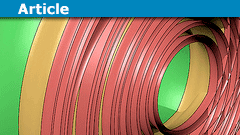
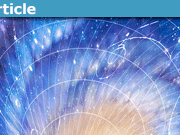
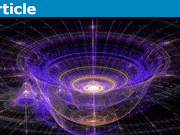


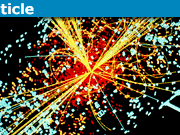
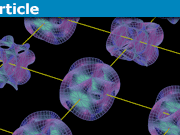
What can be added, except that it is a very very interesting and profesionnal course on the topic? I wonder the ability to concentrate thirty years of intense work in such a limpid document. Thanks so much for this. Unfortunatly one certainly needs exactly so many years to digest all the data exposed here if one is starting from the very beginning. This is demonstrating once more time that these discussions should be reserved to profis! A byside effect is that many many questionsions asked on PF on that topic become after that totally meaningless as long as the stuff has not been understood. My next winter time is already occupied.